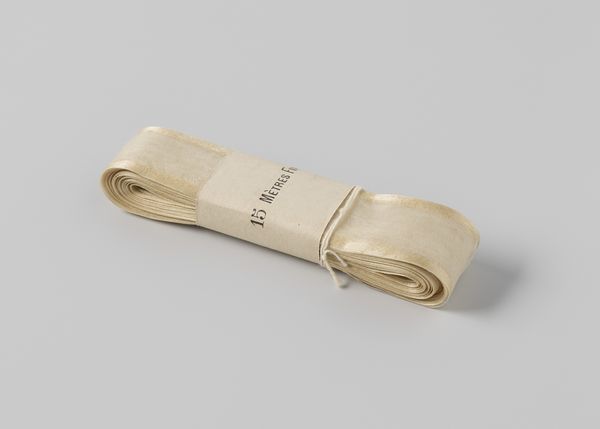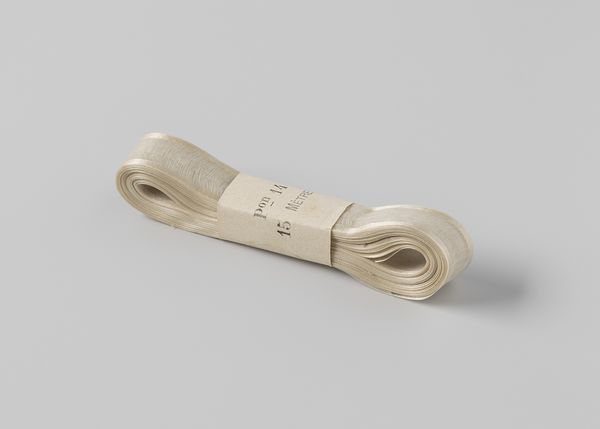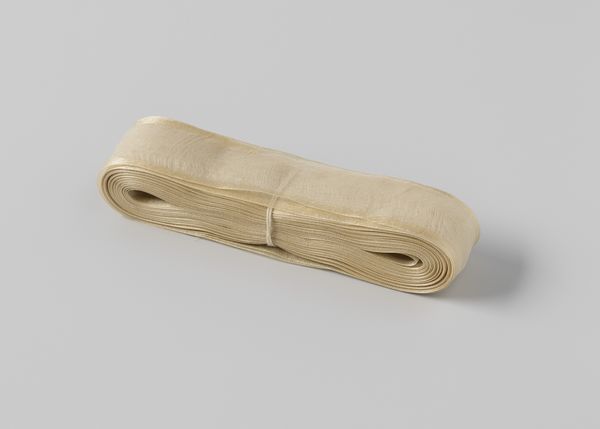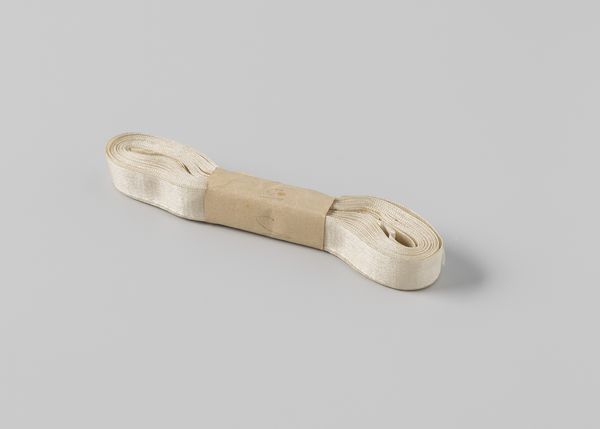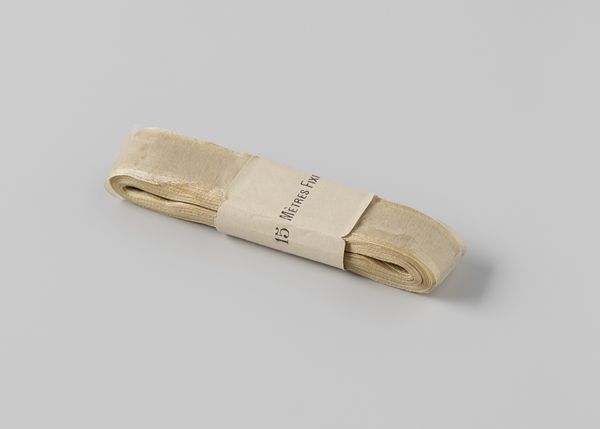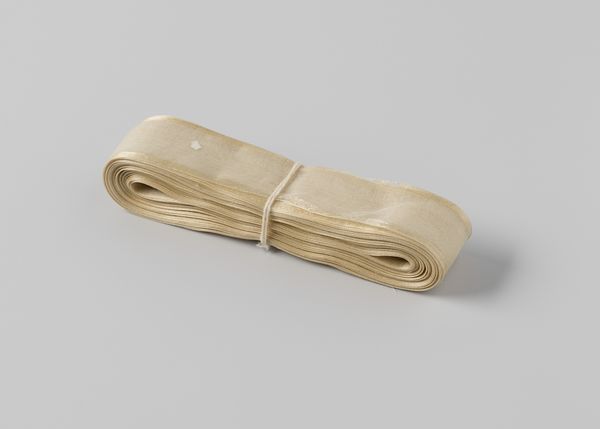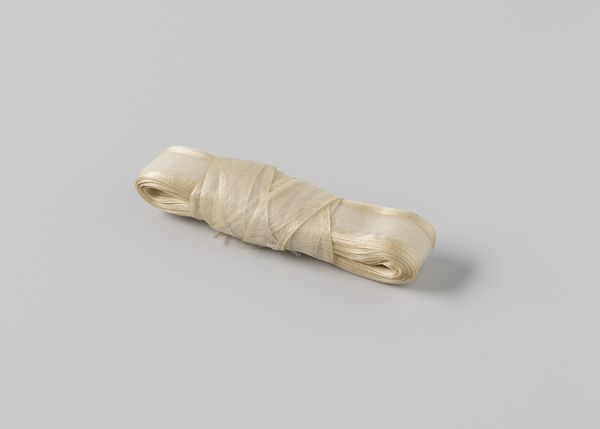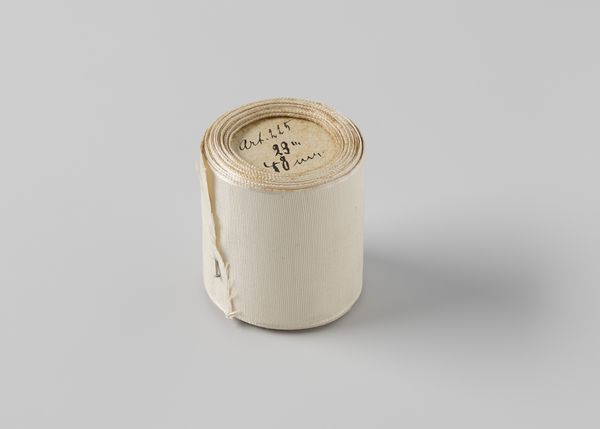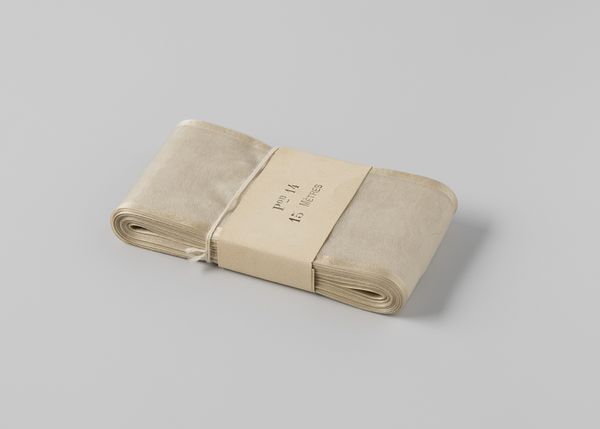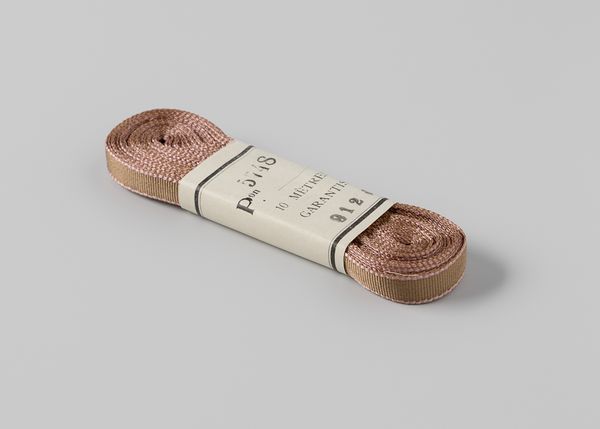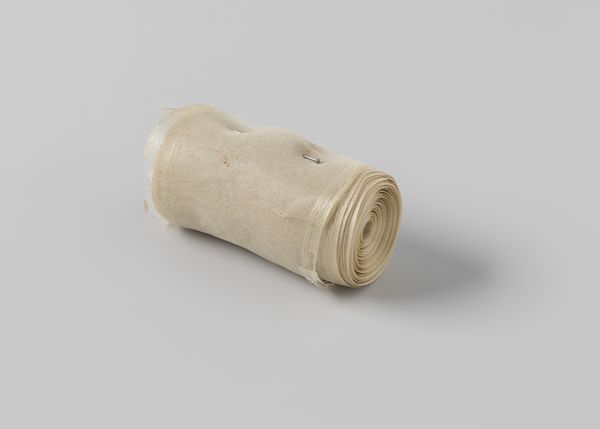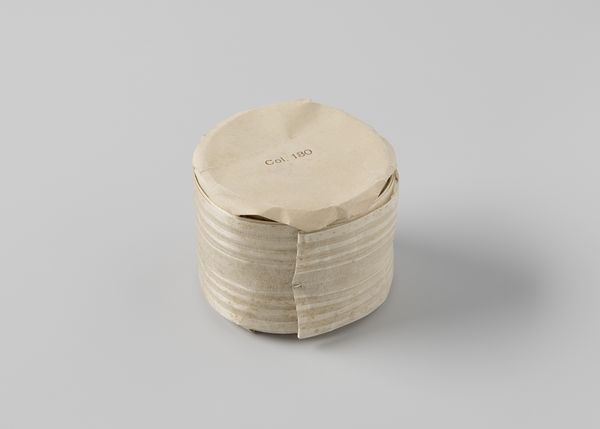
silk, textile
#
silk
#
textile
Dimensions: length 1500 cm, width 2 cm, height 2 cm, length 11.5 cm, width 2 cm
Copyright: Rijks Museum: Open Domain
Editor: So, here we have a fifteen-meter ribbon of cream-colored gauze, dated from around 1900 to 1915. It's silk textile, and it looks like it's still on its original cardboard roll. I'm immediately drawn to the tactile quality of the material. What strikes you about this piece? Curator: Immediately, my mind goes to the silk production itself. Where was it made? Who were the laborers involved in transforming silkworms into this refined material? The early 20th century was a period of massive industrial change; I wonder about the conditions in the textile mills and the role of child labor in creating such luxury goods. Editor: That's a perspective I hadn't considered! I was focused more on the ribbon's aesthetic qualities, but you're right. It represents a whole chain of production. Curator: Precisely! And even the fact that it’s preserved – it prompts thoughts about consumption and waste. Was this ribbon cherished, or was it simply an offcut? How many ribbons, like this one, ended up discarded? This piece isn't just a beautiful object; it’s a marker of a system. How the cardboard has held its color after all this time is fascinating. Editor: It really makes you think about the full lifecycle of a material object. From its raw origins to its final disposition and potential rediscovery. Curator: Absolutely! Analyzing art through a materialist lens forces us to confront these realities and re-evaluate our relationship with the things we surround ourselves with. I think my understanding of the ribbon is improved through further discussion of its practical applications. Editor: Me too! I hadn't really thought about it beyond its simple beauty and texture, but there's so much more there once you consider its origins and use. Curator: Exactly, every object carries those silent histories within it.
Comments
No comments
Be the first to comment and join the conversation on the ultimate creative platform.
